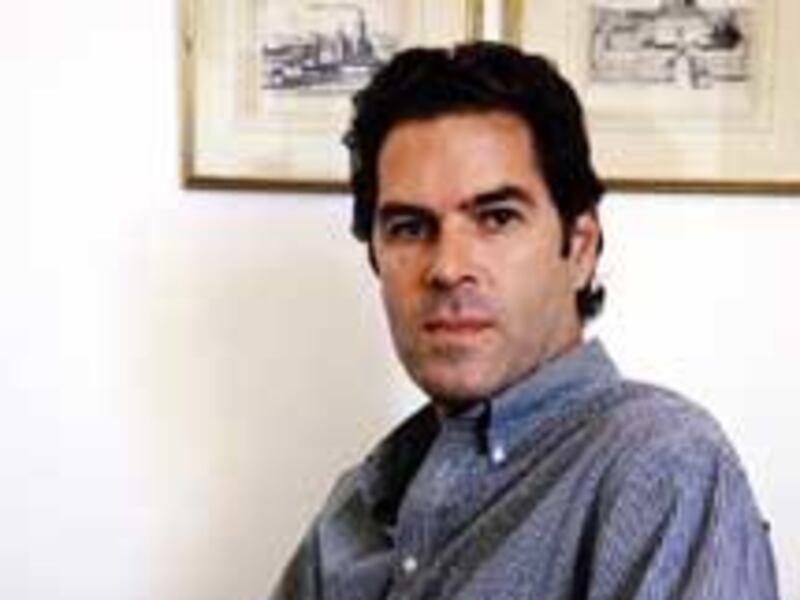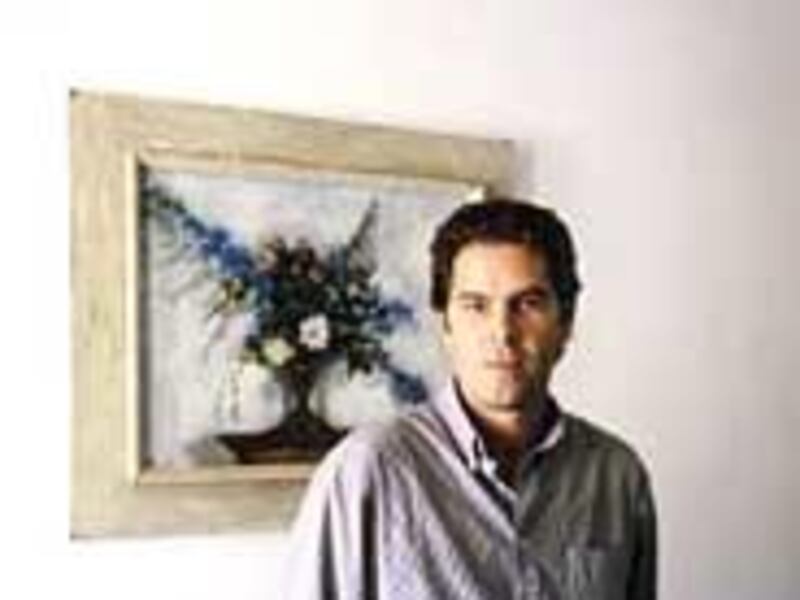Nicholas Shrady, author of "Sacred Roads: Adventures from the Pilgrimage Trail" and, most recently, "Tilt: A Skewed History of the Tower of Pisa," is also well-known for his magazine articles. His byline has appeared in Architectural Digest, The New York Times Book Review, Travel & Leisure, Forbes and Town & Country.
Although a native of Connecticut and educated at Georgetown University with a degree in philosophy, Shrady has made Barcelona, Spain, his home for the past 17 years.
"It's a very nice place to hang one's hat," Shrady said during a telephone interview from Barcelona. "I came here to do a story about an architect and I fell in love with the town. I was living in an ordinary apartment in Brooklyn at the time, and I was just enthralled with the whole Spanish cultural scene.
"I didn't speak the language at first, so the first year was pretty excruciating. But language never was an obstacle. I think moving here has enriched my life."
Shrady has also long been drawn to Romanesque architecture, which he especially appreciates in Pisa, Italy, and its environs. "The first moment I stood there in the Piazza, I was overpowered by the conjunction of Romanesque buildings. It was a singular moment. The image of the tower and its context has been in my mind for a long time.
"In the '90s, the tower began to appear in the press. I became fascinated again with the subject. As I researched it, I found there was very little written about the tower. There are not many cultural icons of that sort, yet there was a great gulf of information. I thought, 'Here is a book.' "
Among the sources he searched were the municipal archives in Pisa. "It was very hard going. Usually, the manuscripts were in archaic Latin, but I made my way. It was meticulous research, like a detective process. It was wonderful to work on it."
According to Shrady, the stonecutters, masons and sculptors who were selected to work on the buildings were the best that could be found. "It was considered an extremely prestigious commission. It's really hard to imagine today. Pisa is a provincial, Tuscan city. It is far overshadowed by Florence, or even Siena. But in the 11th and 12th centuries, Pisa was a powerhouse with a democratic form of government that was revolutionary for its time. Pisans were admired and feared."
Shrady believes Pisa was an important maritime republic where commerce thrived. "Pisa had the money. Its ports were able to maintain communication and mobility. It had a head start on Florence and other cities — if you had galleys and mobility and could do battle, you were strong. That Pisa should have benefited in an artistic sense is logical."
The tower was "sturdily built and its facade a series of columned stories that give a transparency and lightness that belies its construction," he said. "That was the genius of the architect (who remains unknown). If you look at the tower, it appears to float in the landscape. It is a light and delicate building by its appearance. Its likeness is very hard to achieve in architecture."
Finished in the 14th century, the tower did not assume importance as an icon until many years later. "Initially," said Shrady, "it was a source of embarrassment that the tower was askew. It was not a source of pride. But as it gradually created a mystique of its own, it became known far and wide. That didn't happen until the 18th or 19th centuries. Before that, it was known as an important architectural work, but there was much more interest in the Cathedral. Today, the tower eclipses all other buildings on the Piazza."
Because Pisa's subsoil is alluvial, there are other buildings in the area that tilt like the tower. Folklore suggests that the workers or others conspired to make the tower lean — but there is no evidence that that is true. It seems surprising that the tower was built on such voluble terrain because it began to lean immediately. "If it hadn't been sturdy, it would have toppled centuries ago," said Shrady, "and yet it had excessive weight on too-reduced an area" — 14,700 tons.
Shrady notes that centuries of technicians made many attempts to strengthen the tower, some of them ingenious, and some not. Shrady recounts that 19th-century efforts to uncover the ground floor of the tower nearly toppled it. "For Mussolini, the crooked tower was a thorn in his side. In 1934, he had cement pumped into the foundation which was almost disastrous."
Finally, the most recent attempt, beginning in the 1990s, and using a complicated and time-consuming system of soil extraction, "is probably one of the most important civil engineering projects in the last 50 years. It was an incredibly delicate operation. In the end, they have saved it for another 300 years.
"They have a number of computer models that can make those predictions with a great deal of accuracy. In fact, before they took drastic measures, a computer-program simulation of the tower made it topple. It just doesn't stand to reason that the tower was standing."
E-mail: dennis@desnews.com


